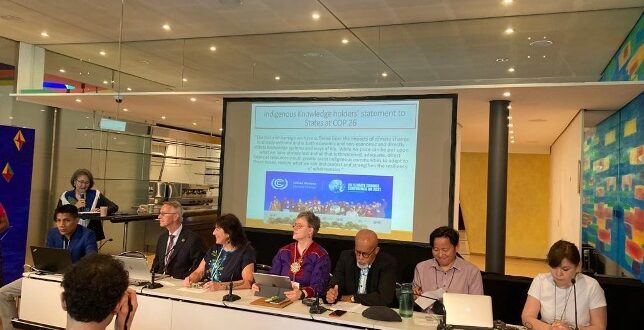LOSS AND DAMAGE, FROM THEORY TO PRACTICE
As we know from COP27, the topic of Loss and Damage (L&D) has formally entered the agenda of the climate negotiations. Therefore, it is also one of the ‘hot’ topics of these sessions in Bonn (SB58) and, in particular, it is now compelling to understand how to make operational the related fund. It must be said that L&D is not part of the SB58 agenda (it is in fact an item of the COP agenda) however, given the relevancy that the fund has and will have for the communities affected by climate change, discussions on the matter are already underway.
From this point of view, also the Chairs of SB58 made a point of clarifying that L&D will be placed at the center of the work of the Glasgow Dialogue which is, instead, amongst the subjects of these sessions even if the agenda has not yet been formally adopted (we talked about it in the article at this link). In the meanwhile, multiple side-events are taking place, the conclusions of which have the function of informing and advancing the process.
What arises is certainly that the most exposed populations to climate change are well aware of what it means to suffer loss and damage due to unfavorable climatic events. Indigenous peoples have, in fact, brought many concrete examples to the discussion table in support to their words. Gunn-Britt Retter, representative of the Inuit and Saami populations of the Arctic, explained how climate change is seriously reducing available natural resources, altering the traditional operational systems of communities as well as forcing many to relocate elsewhere. Andrea Carmen, Executive Director of the International Indian Treaty Council, pointed out that the extinction of some native species is altering the biodiversity of the territories between Mexico and the United States of America which is negatively affecting communities that live on agriculture or farming who have developed their practices relying on the correct functioning of the natural balance.
‘The loss and damage we have suffered from the impacts of climate change is already extreme and is both economic and non-economic and directly affect knowledge systems and ways of life. While no price can be put upon what we have already lost and all that is threatened, adequate, direct financial resources would greatly assist Indigenous communities to adapt to these losses, restore what we can and protect and strengthen the resilience of what remains’.
Quote from Indigenous Communities Group declaration released at COP26
The diversity of scenarios that climate change is capable of generating definitely opens the door to profound discussions about what exactly is meant by damage and loss. This struggle was also expressed by the Co-Chair of the Executive Committee of the Warsaw International Mechanism (WIM ExCom). For this reason, with the 18th meeting of WIM ExCom held in Manila, a direct stream of dialogue was initiated with the indigenous communities in order to be able to integrate their point of view within the work flow of the Santiago Network and therefore catalyze efforts so that the identified solutions are effective and meet the needs of these communities (for more information on the Santiago Network you can read our article in Italian at this link).
From this point of view, the indigenous communities already have clear ideas on how the fund should be structured. First of all, the L&D fund should not be associated with other climate finance funds but should maintain its own independence. Furthermore, it should be designed within the UNFCCC in order to elude potential private actors and serve instead public interests. In this sense, it is fundamental that funding streams are explicitly created for indigenous communities and that the financed solutions are developed with a bottom-up approach. This way, on the one hand, the risk of replicating often ineffective funding models would be avoided (for example the Green Climate Fund which is regularly used for initiatives detached from the real problems daily faced by certain communities), on the other hand, it would serve to guarantee a human approach that respects people’s needs and rights. For this reason, indigenous communities insist for the very definition of L&D to be flexible in order to adapt to local contexts, including both tangible and intangible loss and damage (economic and non-economic losses).
Last but not least, the fund should not only have an emergency and restorative function for damages and losses already undergone, but also act to prevent potential damages and losses. This aspect has also been raised by the actors of the humanitarian aid system who have stressed the shortcomings of this approach regarding the challenges of the present and future impacts of climate change and which, therefore, must not be replicated. Therefore, it is necessary to work primarily on initiatives that provide resilience and adaptability with the direct contribution of the communities involved.
Article by Erika Moranduzzo, ICN Volunteer

